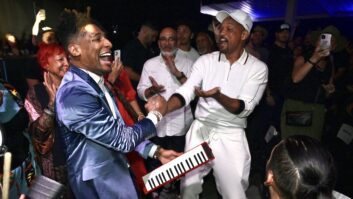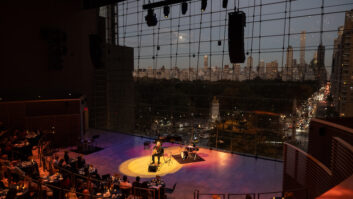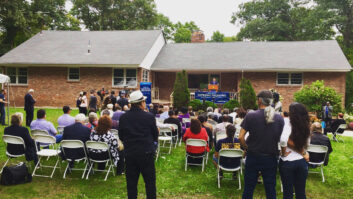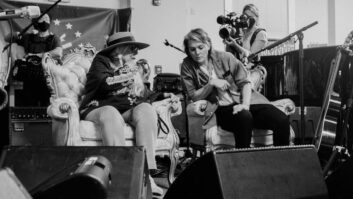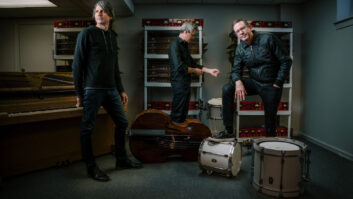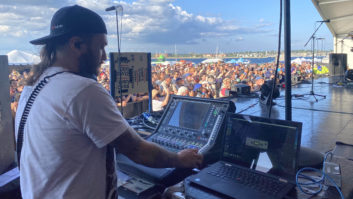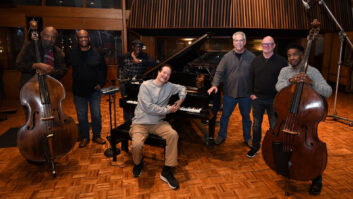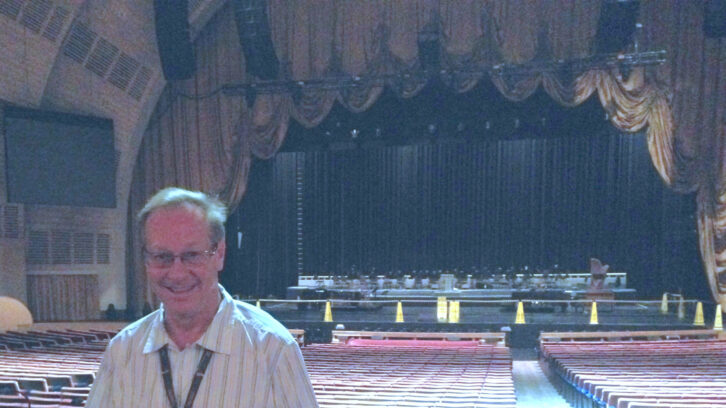
From the August 2015 issue of Pro Sound News.
At 4 p.m., the hall is empty. Everything is ready for the big night—the orchestra’s stands are perfectly arranged under the stage, the microphones are cleaned to add a little sparkle, her elaborate costumes are neatly arranged backstage—all just waiting for the show to start. The crew is expected at 5:30; the plan is to hold a brief rehearsal, let the musicians settle in, and practice a few numbers with Tony before the doors open.
It’s the final night of Tony Bennett and Lady Gaga’s four-night residency at Radio City Music Hall. Tom Young, the long-time production manager for Bennett, invited me to the historic hall before the show to see the set up and talk about working with the two platinum performers on their unexpected collaboration. With only the occasional patter of footsteps of a venue employee, Young and I saw the silent side of the legendary room—the Art Deco walls echoing back tales of past performers that had passed through—as we dug into just how he helped bring the performance to life each night.
“Radio City—it’s probably my favorite music hall,” Young said, who, as a native of the New York City area, holds extra affection for the 6,000-seat venue. “I was actually a design consultant when they did the renovations because I had mixed here so much.”
With an age difference of 60 years, the pairing of famous crooner Tony Bennett and pop superstar Lady Gaga might seem an unlikely match, but with her classical training, Gaga really stepped out and showed her versatility in Cheek to Cheek, the jazz album she and Bennett recorded together and released back in September, 2014. As a longtime fan of Gaga, I’ve known her talents from trolling the Internet for underground, acoustic performances, but with Cheek to Cheek, she’s able to really showcase her abilities front and center—breaking herself away from that meat-dress image she created back in 2010. Now on tour, it comes as no surprise that for the New York City stop, Bennett (a native of Astoria, the northern neighborhood in Queens), and Gaga (of New York City’s Upper West Side), would choose Radio City. Acknowledging the setlist of songs that relied on the acoustics of a room, Young said Radio City’s performance hall is capable of supporting that need.
“The room is so responsive—you can hear everything, even the grooves on the cymbals; that’s my favorite,” Young explained. “My goal is to capture a good performance. I have a lot of experience and I know that every room has its own personality.”
“Tony does this one number a cappella with no mics at all, and the room really helps make that impact even stronger. Tony owns the art of intimacy—it’s like he’s performing just for you,” Young added.
The stage setup for the Cheek to Cheek tour is fairly minimal. For reinforcement, the tour relies on each venue’s house system, so for the Radio City performances, they used a QSC-powered JBL VerTec line array system (which Young was instrumental in adding to the venue during the redesign). Young controlled the PA with a Yamaha PM5D console, while monitor engineer Jimmy Corbin manned the monitors on a DiGiCo SD7.
“The show is really all about the music. We fly sidefills but don’t use wedges for the main stage. Tony’s coming from a singing background and is very comfortable matching to the house PA,” said Young.
Working with Bennett and Gaga’s show also requires careful mixing with the three live bands. Young explained that the tour has three separate show sets, labeled A, B, and C, which are chosen based on the venue. The A show (used at Radio City, Hollywood Bowl in LA, and the Royal Albert Hall in London) includes a quartet on stage right for Tony, a quintet on stage right for Gaga, and a 38-piece orchestra that rises up on the elevator platform at the front of the stage. Show B, which is the most common of the shows, has an extra 13 musicians added to the mix. Show C eliminates the orchestra all together.
“I’ve been doing this orchestra thing for a long time; I know the music and its sensitivity,” said Young. “The challenge is knowing which mics should be on at various times.”
Young has partnered with Bennett for a number of years, and because of this close relationship, Young said, Bennett trusts him with the sound at each show. “He has a lot confidence in what I do,” Young said.
While Corbin has worked with Lady Gaga before, Young noted it is his first time working with the 29-year-old artist. Gaga, known for her eccentric outfits and catchy pop music, took a big turn in her career by partnering with Tony Bennett for Cheek to Cheek, which allowed her to show another side of her talents.
“This is a new genre for her and she’s done really well with it. She’s a legit singer, and you can see it through her performances,” Young said. Of course, even with a change in genre, it wouldn’t be a Lady Gaga show without seven costume changes.
For wireless microphones, both Tony and Gaga use Sennheiser SKM 5200 transmitters with Neumann KK 105 S capsules. Occasionally, Young said, he also uses DPA and Shure microphones when needed.
At the end of the day, Young said his main goal was to make sure everything sounded perfect for the audience. “Your biggest comparison is trying to make the live show sound as good as the record,” he said, “but what’s gratifying about the live performance is that you have an immediate response from the people and performers.”
